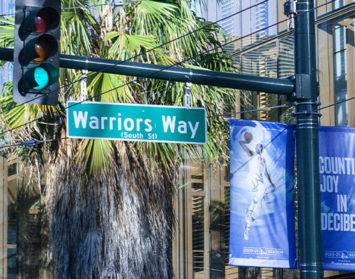Let me say right up front that I have not been a big fan of public libraries in recent years, new or old. Frankly, I can’t remember the last time I visited one and what with the Internet and growth of online information, it had become easy for me to question the value of maintaining libraries, much less investing major capital into new facilities. I had concluded that technology had all but eliminated any need for places where books are kept.
Of late though, I’ve had second thoughts, based on my re-examining the qualities that enrich a community — in particular, urban neighborhoods such as downtown San Diego. I certainly understand that more than bricks and mortar and whether there are sufficient parking and commercial amenities determines the viability of downtowns and other neighborhoods. My established tenure in the leadership of the San Diego Children’s Museum and our company’s philanthropy over the years are clear indications that I get it when it comes to providing the cultural and social resources necessary to make a city more livable. I’ve come to realize libraries are among those amenities.
What prompts me to tackle the San Diego library issue is the current prolonged effort to raise money in the private sector to replace the aging 56-year-old central library at Eighth Avenue and E Street. The city of San Diego had a little more than 333,000 residents when that library opened its doors in 1952 — roughly one quarter the population today.
Over the years, the city’s library system has opened 30-plus branches throughout the city, which was probably the excuse civic leaders had for not dealing with the need to replace the central venue.
What the branch library network does not take into account is the fact that downtown San Diego has become home to tens of thousands of residents in just the past decade or so and, given present and future residential development plans, is bound to attract substantially more neighbors in the next few years. There will be a continued and increased need for a library to serve those people, and, I submit to serve the growing numbers of businesses that want or need to be located in a literate and cultured environment.
This, of course, assumes correctly there is a need for libraries in the first place. I’ve come to realize there are compelling reasons our city has to invest in a state-of-the art library that will serve our urban core well into this century. Seattle, Minneapolis and Salt Lake City all have built new and dynamic, central libraries recently. San Diego needs to do likewise.
Libraries help their communities achieve their social and economic aspirations in a variety of ways if the experiences of other cities can be examples.
First of all, economic development is one byproduct of central libraries. In Queens, that borough’s library serves as the central venue for workforce training, career planning and job-hunting efforts. The very presence of Chicago and Seattle’s public libraries has proven to spur downtown revitalization in those cities. Small businesses and entrepreneurs have used central libraries in Brooklyn, White Plains and Multnomah County for research and business development data. Realtors and builders use the new central libraries in Salt Lake and Cerritos as major selling points.
Oddly enough, public safety enhancement is a byproduct of libraries in several cities, including those in Austin, Texas where its library houses a “Wired For Youth” program for at-risk kids. In Chicago’s North Side, the library collaborates with police and fire departments on programs ranging from fire safety in the home-to-home security systems, self-defense training and family emergency planning.
Large-city libraries also host various citizenship and acculturation efforts as is the case again in Queens’ “New Americans” program and in Hartford where city and state officials use that library as the venue for public discussions of clean water, landfill, and political issues.
These are but a few examples of how libraries function in large cities far beyond accommodating stacks of books and trying to compete with the Internet. Libraries in these and other cities have become a much broader civic resource that promotes different accesses to information in many forms.
That said, these and myriad other services would be provided more efficiently by a new central library for downtown San Diego. Thus far, however, it’s a matter of money that has kept the proposed $185 million, nine-story library structure form rising out of its East Village site.
The Centre City Development Corp. has set aside $80 million for a new library while the state would be the source for $20 million. The $85 million balance is to be raised through private donations of which a little more than $18 million has been raised to date.
Fund-raising, especially in today’s cooler economy, is always a colossal undertaking. But in this case, it’s more than fund-raising. A new central library needs to be seen for what it is — a smart investment in rounding out a vibrant urban core that will make downtown San Diego the cultural center of literacy and information throughout the entire region.
To me, that makes the investment a real bargain.
Jason Hughes is founder of Hughes Marino, an award-winning commercial real estate company with offices across the nation. A pioneer in the field of tenant representation, Jason has exclusively represented tenants and buyers for more than 30 years. Contact Jason at 1-844-662-6635 or jason@hughesmarino.com to learn more.









